Health
COVID-19: Handwashing Adherence Drops by 93% in Kampala Hotspots
Published
5 years agoon
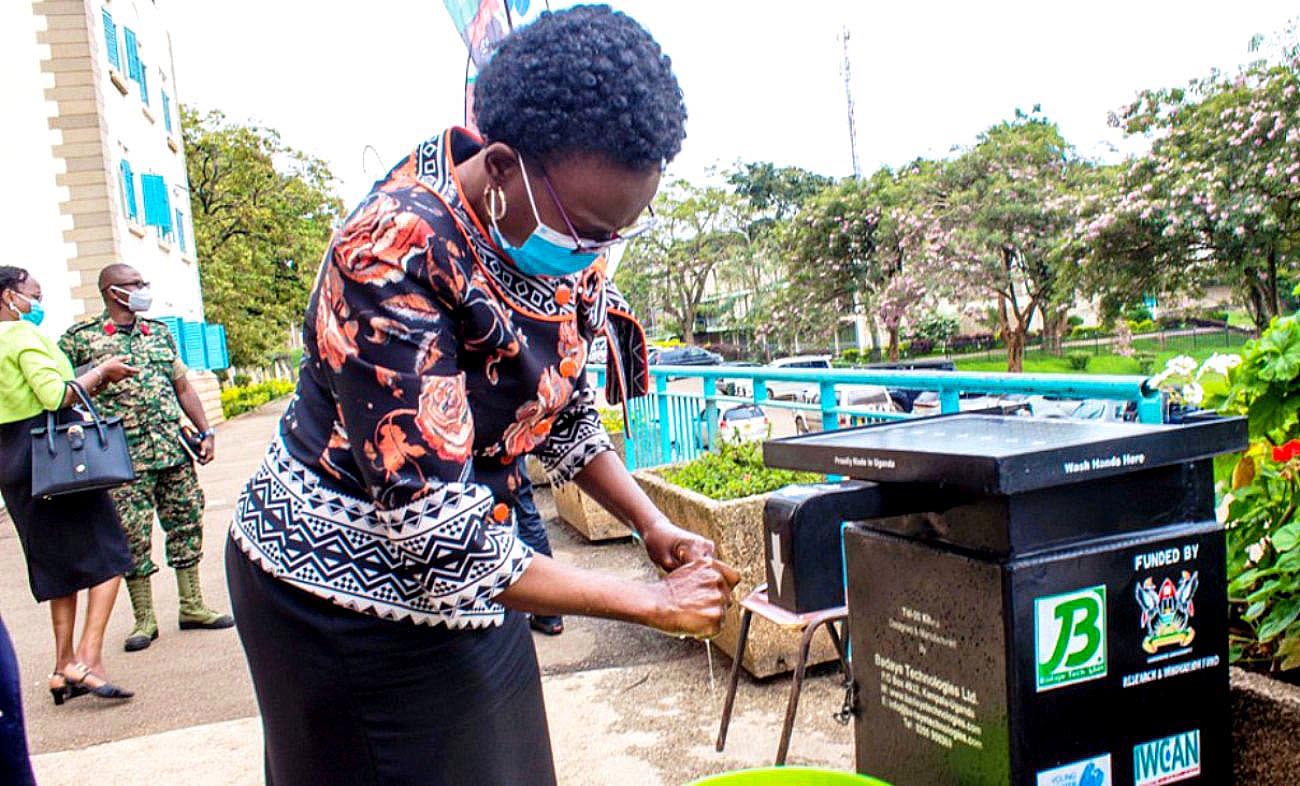
By Joseph Odoi
As Uganda continues to fight tirelessly to control the spread of COVID-19, results from a field-based survey in Kampala’s informal settlements have indicated that citizens have abandoned hand hygiene, a key pillar in stopping the spread of a virus.
To beat the virus today and ensure better health outcomes beyond the pandemic, hand hygiene, especially through handwashing with soap have been emphasized as a top priority.
But results of a study titled: Adherence, Lived Experiences and Resilient Transformation among “slum dwellers” (ALERTs) in COVID-19: A study of Ki-Mombasa and Kabalagala-Kataba slums in Kampala present an urgent need to intervene in these communities in order to improve public hygiene practices such as handwashing, if the intended objectives are to be achieved.
Dr. Gloria Seruwagi, a behavioural scientist at Makerere University School of Public Health has observed that some of the set Standard Operating Procedures such as physical distancing, regular sanitizing and use of face masks are less likely to be followed and implemented due to congestion in the settlements.
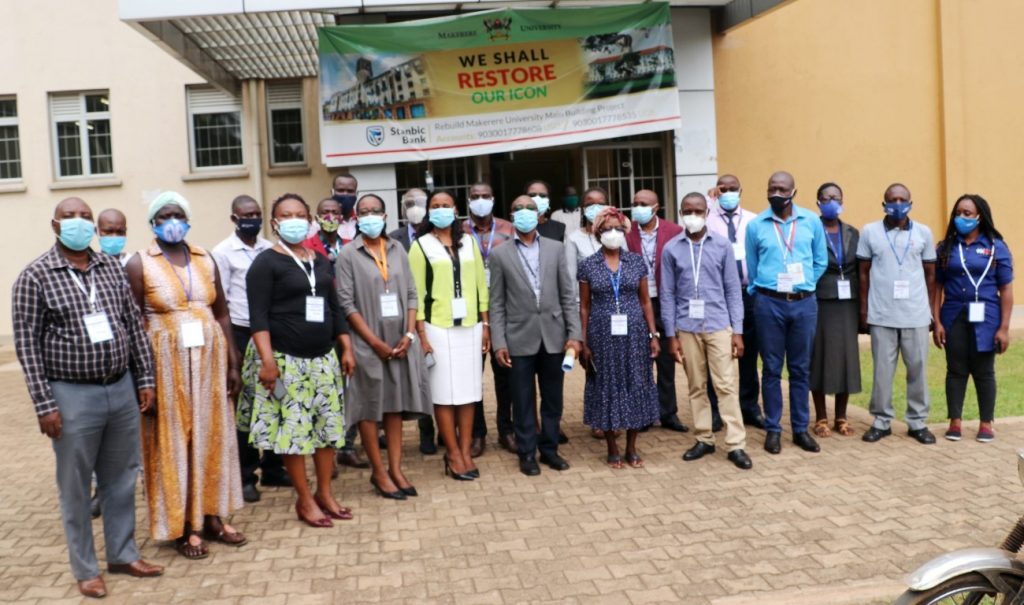
While presenting an overview of results from the study, Dr. Seruwagi said Ugandans had gone back to their old ways and abandoned best hygiene practices such as handwashing, which is critical in the fight against COVID-19.
“Residents say they can’t afford masks and those who have them say masks make breathing uncomfortable. Sanitizing is a luxury to most people in Bwaise and Kataba communities. While the practice of handwashing was feasible and adhered to at the beginning of March, it has drastically dropped by up to 92.6%.
Dr. Seruwagi, who is also the Study Principal Investigator observed that residents of Ki-Mombasa and Kabalagala-Kataba still have a major infodemic challenge of misinformation surrounding COVID-19, also exacerbated by multiple power centres and enforcers who locals say give confusing messages and seemed to have an uncoordinated response strategy.
“The community told us that everyone seems to be a “little king” in enforcing COVID SOPs and guidelines – from the police to Division leaders, food distributors, VHTs and local village leaders. They were not working in harmony and were giving different, sometimes confusing, messages and instructions. This greatly contributed to confusion and partly resulted in community noncompliance” she said.

According to Hilda Namakula, ALERTs study Co-Investigator people living in informal settlements had vast knowledge of COVID-19 signs, symptoms and how it is spread.
For instance, in this study, up to 82% mentioned high fever as a symptom while 80.2% mentioned sore throat as a symptom. Meanwhile 80.8% knew that sneezing and coughing were symptoms and 78% mentioned body pain.
Despite this knowledge, Namakula contends that communities have multiple – and sometimes contradictory – sources of information which affect their adherence to the preventive measures.
“In Kampala, TV takes lead as the main information source at 78%, social media 14%. Other sources include radio, family members and neighbors. In addition to multiple information sources, multiple enforcement authorities in Ki-Mombasa and Kabalagala-Kataba have contributed to confusion on which information to follow.’’ said Ms. Namakula.
In a bid to establish reasons for non-compliance to COVID-19 SOPs such as physical distancing or staying home, researchers also found that livelihoods and the need to make a living were the most common explanatory factors.
“Other reasons for non-compliance include perceptions that COVID-19 is a political ploy, declining enforcement and multiple implementers with confusing messages and warring power centres. Moreover, in their power struggles, the different actors who were enforcing SOPs were themselves not adhering for example by wearing masks” Namakula added.
According to the study, communities reported lot of myths and misconceptions about COVID-19 as key drivers of high risk behaviour. For example; people living in Kampala’s informal settlements believe that taking alcohol reduces the risk of infection (16.8%); that sunbathing protects against COVID-19 (47.9%); and that Africans are immune by virtue of their skin Colour (46.5%).

Following the survey findings, Makerere University researchers underscored the need for sustainable community-led interventions to minimize the pandemic implications. The researchers observe that the current efforts to contain the pandemic cannot yield better results unless there is harmony and consistency in messages shared out.
The project team set out to engage health workers and community leaders of Ki-Mombasa Bwaise and Kabalagala-Kataba slum communities to jointly co-design tailored interventions on Thursday 17th December 2020. The engagement climaxed with a dialogue held at Makerere University Central Teaching Facility (CTF-1) with key stakeholders in attendance, including representatives from Makerere University, Kampala Capital City Authority (KCCA), Division and political leaders, Village Health Teams (VHTs), community, administrative leaders, religious leaders among others.
Following presentation of findings, there was consensus from all participants that it was still possible to reverse the non-adherence and high-risk behaviour.
The stakeholders identified priority areas for interventions underscoring the need for community leaders (Village Chairperson, VHTs) to be at the forefront. The co-design process comprised proposals for re-adaptation of some existing interventions or focusing more on some than others (e.g. emphasising wearing facemasks vs. social distancing); and practical ways for operationalizing the Community Engagement Strategy (CES) amidst increasing community transmission; designing a community behavioural change communication component; as well as undertaking joint rigorous resource mobilisation at the next phase to implement some of the proposed interventions.

Government of Uganda through the Ministry of Health launched the National Community Engagement Strategy (CES) for COVID-19 Response in October 2020. This strategy arose from the need to stem the wide spread community transmission amidst low levels of compliance to the COVID-19 SOPs.
This strategy puts responsibility to community individuals, local leaders, households and communities to take charge and ensure optimal compliance. The CES also spells out the key role of VHTs, other local leaders the roles of the proposed village health Taskforce (VTF) and expected outcomes.

This study is funded by the Government of Uganda, through the Makerere University Research and Innovation Fund (MakRIF). The ALERTs study is dual-pronged and phased in implementation that combines an innovative citizen science approach with a participatory project co-design phase.
Ms. Carol Kamugira, a Mak-RIF representative applauded the research team for being innovative and bringing community members to devise community-led sustainable solutions in the fight against the coronavirus.
“It is the first time I have seen this kind of arrangement, bringing real community members to co-design interventions here at the university. Such interventions will be successful because they came from the people concerned and who will monitor the process. As the RIF we are very proud of Dr Seruwagi and her team and that is why we are here to support such meaningful studies. The government gave us resources, we advertised and received many research proposals. The proposal for this research was among those selected for funding because it was strong and very innovative,” Ms. Kamugira said.
She hailed the Uganda Government for the support rendered towards research and other training needs at Makerere University.

Other Key Findings
• The living arrangements in the informal settlements affect people’s adherence to SOPs like social distancing –emphasis should be on encouraging them to adhere to the other more plausible measures like hand washing or wearing masks.
• The participants reported doing the following often: the washing of hands with water (38.3%); washing hands with water and soap (33%); covering the mouth while sneezing/coughing (28.5%); using a mask while in a public place (32.2%); consumption of fruits (25.8%); regular drinking of water (35.5%).
• A big proportion of the study participants knew that chronic illness increases the risk of death from COVID-19 (81%); and that those infected with the disease should be isolated (93%).
• While children living in informal settlements were aware of COVID-19, they are generally not adhering to the SOPs because it is believed that their age group is not at risk.
• COVID-19 has increased levels of violence, including violence against children and SGBV. It has also significantly contributed to increased cases of defilement, early marriages, teenage pregnancy and pimping children for transactional sex. For example, forced sex among the respondents during lockdown was reported at 2% and slapping 4%.
• The study also revealed that some men are survivors of violence whose condition has been worsened by COVID through not having an income source and depending on their wives who job is commercial sex work (CSW). Other men are clients of CSWs who target them claiming nonpayment; or their husbands who don’t want clients sleeping with their partner.
• Study findings also highlight some adults, including parents, local leaders and law enforcement officers as being more collusive than supportive in cases involving violence against children.
• Local duty bearers and key stakeholders in child protection such as social workers and police officers need more support to effectively undertake their roles in child protection and wellbeing.
• Schools remain both a cognitive and physical safe space for children. The closure of schools presented heightened vulnerability for children as they became more exposed, over prolonged periods of time, to multiple rights violation including lack of food and all forms of violence. Nearly all children in study sites are not benefitting much from the Education Continuity Programme and most caregivers were not in position to support learning during school closure. Children wanted to return to school and worried about an uncertain future.
• There is also evidence of belief of the politicization of COVID-19 for example the impression that the related measures are intended to curtail the activities of the opposition politicians.
• Slum communities reported limited knowledge and access to COVID-19 testing services in their communities or within Kampala as a whole.
Recommendations:
The researchers recommend that, building on from its massively successful awareness campaign on COVID-19, government should now work on addressing the barriers of non-compliance; emphasising personal responsibility and the community’s own contribution in the fight against COVID-19.
Moving forward, the researchers recommend that:
1. Government and all stakeholders should focus on addressing the drivers of non-compliance and enforcement fatigue. These drivers include:
- The feasibility of interventions: Guidelines like physical distancing are not feasible in crowded informal or slum settings and need to be revisited. Emphasis should be placed on feasible ones like hand washing and masking.
- Myths and negative perceptions: Majority of the community has not fully bought into the seriousness ofCOVID-19 and think it is not only a joke but is also a political and monetary ploy advanced by politicians, some scientists and supremacists or population control enthusiasts. These myths need to be addressed.
- Shielding community from the reality of COVID as cases are managed out of the community. More profiling of COVID-19 trends and cases should be undertaken for behavioural change impact. However, stigma and other potentially related dilemmas should be carefully managed.
- Leaders, implementers and enforcers of COVID-19 guidelines should be consistent and “walk the talk”.
2. The issue of livelihoods and food security must be resolved as a key bottleneck to compliance.
3. Innovative multi-sectoral and tailored approaches should be adopted to address COVID-19 effects, including violence against children, men and women.
4. Children and adolescents should be effectively targeted in COVID-19 interventions. They need awareness, products (e.g. fitting face masks), voice and protection from the effects of COVID-19 including being witnesses and victims of different forms of violence.
5. Local and community leader and grassroots organisations should be recognised and engaged more in behavioural change campaigns – for instance to engage their communities identify alternative social norms for greetings, for showing love and kindness etc., without putting their lives at risk.
6. The timeliness and critical role of the recently launched Community Engagement Strategy should be leveraged. Local health system capacity should be strengthened and equipped to effectively take up the implementation and enforcement of SOPs for COVID-19 prevention. Equip community health systems and other enforcement structures with the knowledge, required supplies and supportive infrastructure.
Mak Researchers-Slum Communities Designing interventions
In this dissemination, Makerere University researchers and slum community leaders and journalists engaged in co- designing behavioural change interventions to address COVID-19. The results of these sessions will form the final part of the ALERTs study objectives and will be presented in its final reporting. However, some of the suggested “quick” solutions from the groups include:
- Involvement of women in sensitization drives around COVID-19
- Preventive treatment of suspected cases
- Skilling of Youth at Village Level
- Health Education
- Incorporating church leaders in the fight against COVID-19
- Politicians should incorporate COVID-19 Messages in their campaigns
- There is need for VHT support to counter community Spread
- Cultural leaders should join the sensitization
- Incorporate Youth Leaders in awareness
- Have local leaders and Police enforcing directives
- Incorporate NGOs in the fight against COVID-19
- Employ musicians in COVID-19 since they have a huge following
- There is need to incorporate drama and plays with key messages highlighting COVID-19 dangers and how to fight it.
More about the Study
The ALERTS Study was conducted by researchers from Makerere University and Gulu University with funding by Government of Uganda through the Makerere University Research Innovation Fund (MakRIF).
The total number of study participants was 807 in two slum communities of Kampala i.e. Kataba-Kabalagala-Kataba in Makindye and Ki-Mombasa Bwaise in Kawempe Division.
The Study Team:
1. Dr. Gloria Seruwagi – PI, Makerere University
2. Prof. Stephen Lawoko – Co-Investigator, Gulu University
3. Catherine Nakidde Lubowa – Co-Investigator, CHASE-i
4. Hilda Namakula – Co-Investigator, CHASE-i
5. Dr. Eric Lugada – Co-Investigator, CHASE-i
6. Daniel Magumba – Coordinator, Makerere University
7. Flavia Nakacwa – Administrator, Department of Social Work and Social Administration, Makerere University
Article originally posted on MakSPH
You may like
-


Trees That Still Give Shade: Celebrating the Life and Impact of Prof. Tumusiime-Mutebile
-
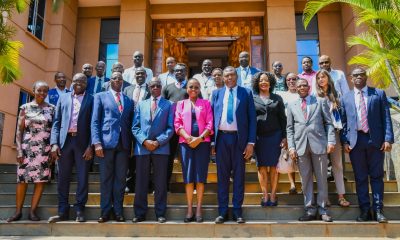

IDI launches the Sewankambo Training Program for Global Health Security in Africa
-
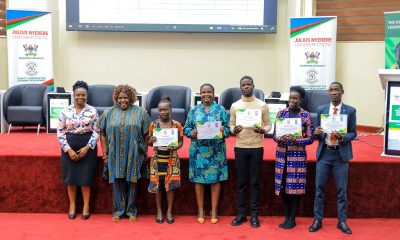

From Vision to Action: Five JNLC–UNDP Alumni Innovations Win Seed Funding
-
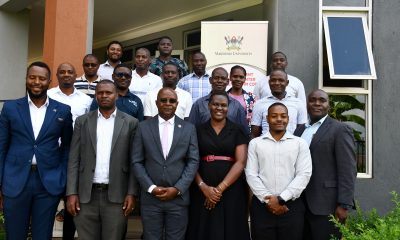

KCCA Officials Begin Two-Week Public Investment Management Training in Jinja
-
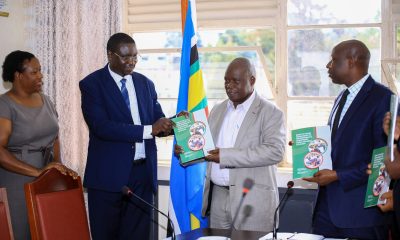

Makerere University and Ministry of Public Service Study Reveals Impact of Salary Enhancement on Teacher Performance in Uganda
-


JASH2025 wraps with the 23rd Matthew Lukwiya Memorial Lecture and Kampala Declaration Statement

The Sub-Saharan African Network for TB/HIV Research Excellence (SANTHE) at Makerere University invites applications for a PhD and Masters of Science training opportunity.
The PhD training is focused on HIV Cure whereas the Masters of science opportunity is for TB elimination. Refer to the adverts/flyers attached for further details.
For inquiries or clarifications please call +256 787-278-393.
Health
International Coordination Office Newsletter, Issue 1 Jan–Jun 2025
Published
1 week agoon
November 28, 2025By
Mak Editor
Dear Readers
We welcome you to our first edition of the international academic mobility newsletter from Makerere University College of Health Sciences. In this edition, we share the highlights of various academic mobility programs at MakCHS, experiences of several students and staff who have been able to travel, study and experience new cultures and skills aimed at increasing their competitiveness in the Global market. We also share challenges and improvements to improve student and staff academic mobility experiences.
Internationalization of higher education is defined by the OECD (1999) as the integration of an international/intercultural dimension into all the activities of a university, including teaching, research and service functions. This is in line with the Makerere University vision 2030 to become a research-led university. This cross-border movement of faculty in higher education has been attracting scholarly attention for decades since knowledge is borderless (Shen et al., 2022). Therefore, internationalization increases global higher education and impacts the world university rankings, with a goal of increasing international recruitment of the best and brightest students and scholars. These international academic mobilities offered at MakCHS involve a broad range of activities like attending conferences, visiting research partners abroad and longer stays in other countries for research purposes.
MakCHS has many academic partners with long-standing bilateral relations and agreements that go beyond academic mobility and thus has overtime developed procedures and quality control mechanisms to support academic mobility. The coordination of these academic mobilities is handled at the International Coordination Office. The office is also responsible for the administration and making sure that students and faculty have a memorable experience. It is also responsible for monitoring and reporting tasks and managing the organizational support and coordination, incoming participants’ comprehensive insurance coverage, registrations, social activities and guided city tours for incomings etc.
We look forward to learning with you, celebrating progress, and charting our next steps—together, as we build for the future.
Enjoy your reading
Dr. Mark Kaddumukasa
Associate Professor
PROGRAM DIRECTOR
View the newsletter using the link below:
ICO Newsletter 2025 Issue 1
Health
IDI launches the Sewankambo Training Program for Global Health Security in Africa
Published
1 week agoon
November 27, 2025By
Eve Nakyanzi
On 27th November 2025 the Makerere University Infectious Diseases Institute (IDI) unveiled the second cohort of fellows—marking a significant step forward in strengthening global health security across the region. The cohort brings together five exceptional emerging scientists whose research areas reflect the continent’s most urgent health priorities. They include Mr. Dickson Aruhomukama in Antimicrobial Resistance (AMR); Dr. Rodgers Ayebare in Case Management, Infection Prevention and Control; Mr. Julius Okwir in Epidemic Intelligence and Community Health; Dr. Robert Zavuga in Vaccines and Medical Counter Measures; and Ms. Phionah Tushabe in Planetary Health, Water, Sanitation and Hygiene (WASH). Their selection marks a new chapter in nurturing homegrown expertise capable of safeguarding Africa’s health systems for generations to come.
The Acting Vice Chancellor, Prof. Sarah Ssali while presiding over the event emphasized the significance of launching the Sewankambo Training Program for Global Health Security as a milestone not only for IDI but for Makerere University and the continent at large. She highlighted the urgency of strengthening Africa’s capacity to predict, prevent, and respond to emerging epidemics, noting the rapid rise in zoonotic disease outbreaks and the persistent weaknesses exposed by crises like Ebola and COVID-19. She celebrated the legacy of Prof. Nelson Sewankambo and the scholars shaped by his leadership, stressing that the program embodies the university’s commitment to producing transformative health leaders grounded in multidisciplinary expertise and One Health principles.
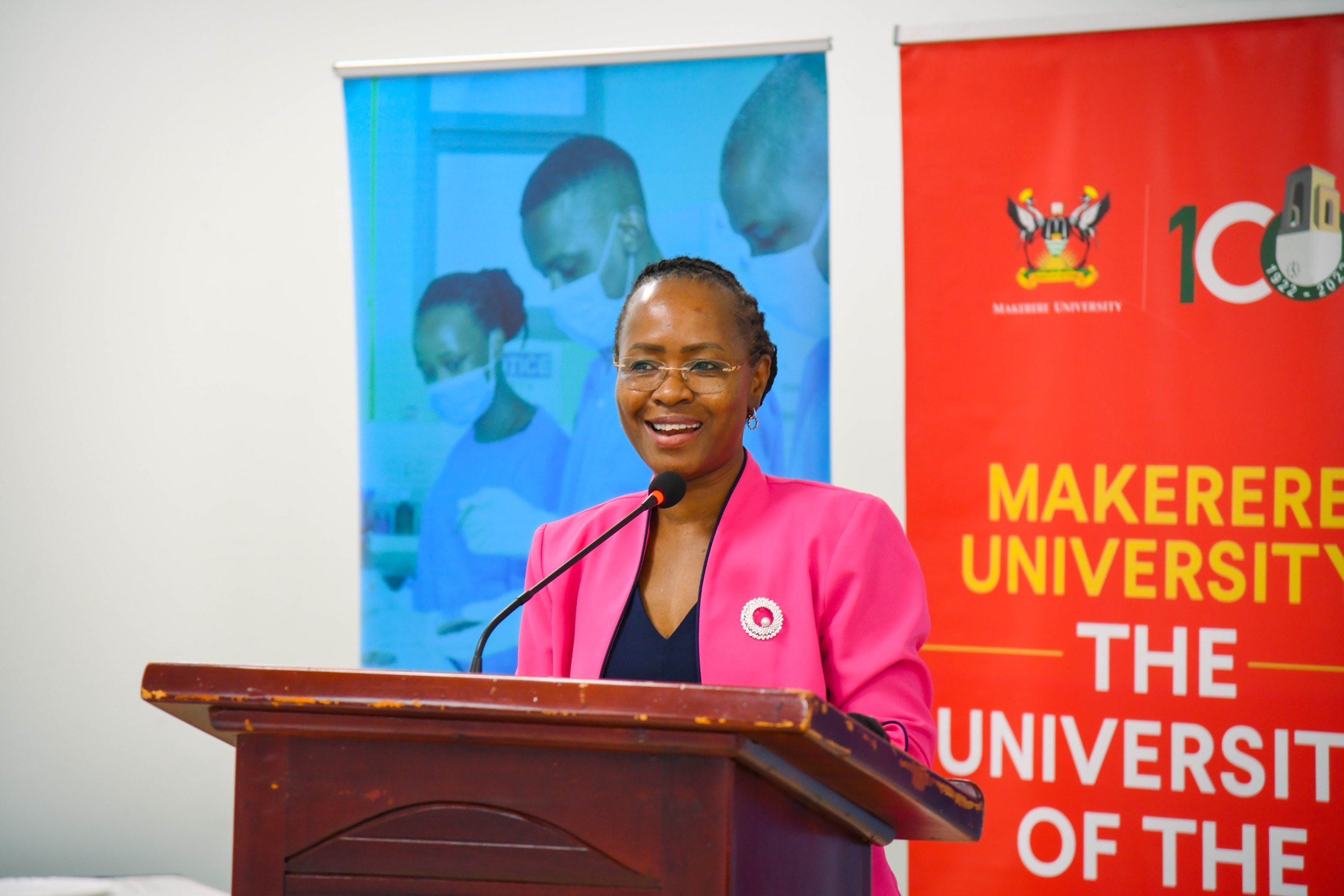
She also called for stronger collaboration across colleges—particularly with the College of Veterinary Medicine, Animal Resources and Biosecurity (CoVAB)’s Center for Biosecurity and the College of Health Sciences (CHS) to ensure that scarce scientific resources are fully utilized and that future health professionals are prepared for an evolving global landscape. In closing, she reaffirmed Makerere University’s dedication to advancing research excellence, nurturing responsible stewardship, and upholding the values that define the Sewankambo legacy.
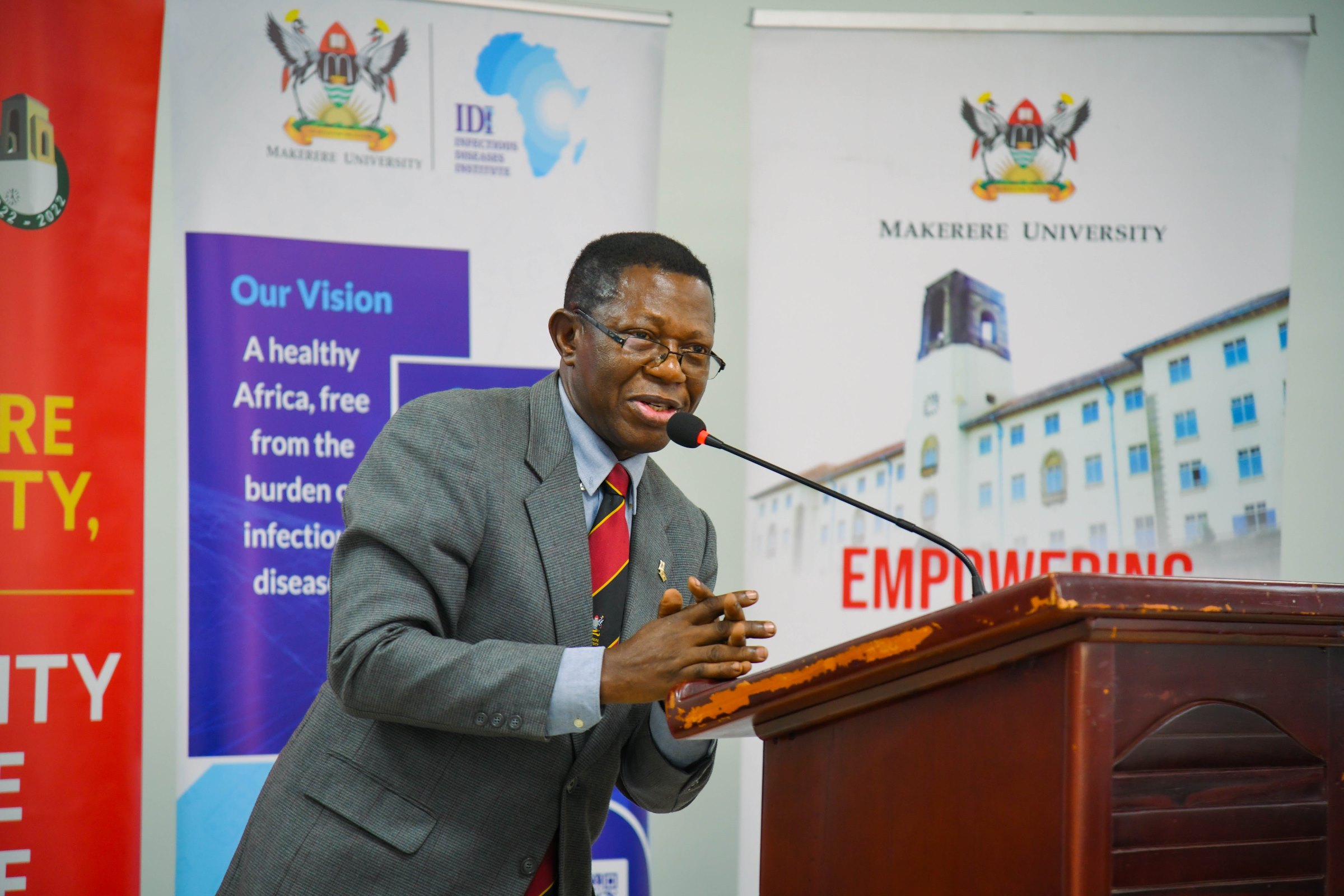
The Academic Registrar Prof. Buyinza Mukadasi also conveyed his heartfelt congratulations to IDI and Prof. Nelson Sewankambo upon this remarkable milestone. He reflected on his recent engagements with the Institute—most notably the launch of the African Centre of Excellence in Bioinformatics—and expressed his admiration for the world-class research emerging from IDI, including publications in leading journals such as The Lancet and Nature. He noted that Makerere takes great pride in IDI’s work across multiple initiatives, from THRiVE to ongoing research collaborations, and wished the newly launched fellows a rewarding and impactful journey in research.
The Deputy Principal CHS, Prof. Richard Idro congratulated the new cohort and welcomed them into what he fondly referred to as “the cookhouse,” where future scientific leaders are shaped. Drawing from his own formative encounters with Prof. Nelson Sewankambo, he reflected on the deep mentorship culture that has defined generations of clinicians and researchers at Makerere—sharing stories of being challenged, supported, and pushed toward excellence. He reminded the fellows that their research will influence health policy and clinical practice far beyond individual patients, carrying long-term implications for national and global health.

Prof. Idro also acknowledged the critical challenges facing clinical disciplines, especially the constraints of promotion pathways that disadvantage highly skilled specialists without PhDs. He appealed for reforms to safeguard the future of key fields like anesthesia and surgery. Closing his remarks, he celebrated the College’s 100-year legacy, expressed gratitude for the university’s continued support, and invited alumni and partners to contribute ideas that will shape the next century of innovation, training, and service.
Dr. Charles Olaro, the Director General of Health Services, highlighted the essential role of academia in strengthening Uganda’s global health security, noting how recent outbreaks—from COVID-19 to Ebola—have revealed both the country’s progress and remaining gaps. He emphasized that programs like the Sewankambo Training Program are vital for building resilient health systems, advancing research, and shaping policies that can respond swiftly and effectively to public health threats.
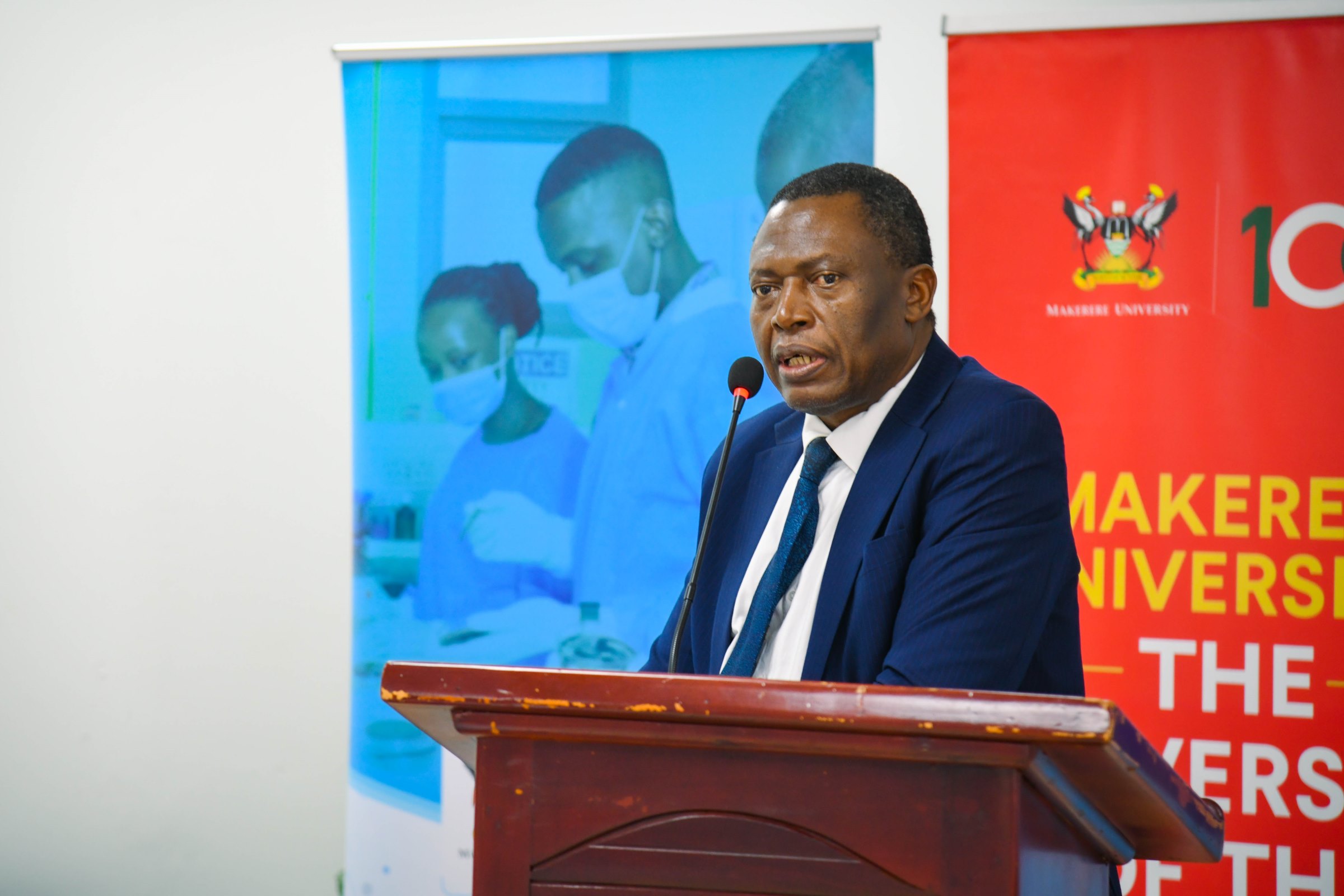
Reflecting on the strong collaboration between the Ministry of Health and institutions such as Makerere University and IDI, he pointed out how research emerging from academia continually informs national policy, including work presented at recent conferences on non-communicable diseases and community health. Dr. Olaro congratulated the new cohort, reminding them that their work carries significant responsibility, as their research and leadership will influence health outcomes far beyond individual clinical care. He also underscored the need for stronger regional capacity, improved emergency response systems, and sustained mentorship to ensure that communities across Uganda—and the region—benefit from timely, coordinated outbreak preparedness.
In his address, Prof. Nelson Sewankambo commended the achievements of the first cohort and challenged the new fellows to uphold—and even surpass—the high standards already set. Reflecting on the rigorous selection process, he reminded the cohort that they were chosen because they demonstrated exceptional promise in a highly competitive field. He noted that the launch of this program comes at a particularly critical moment, as Africa CDC has just established a new Division for Health Security and Sovereignty, even as global financing for health research continues to decline. This, he said, makes the commitment to sustaining the program both bold and necessary.
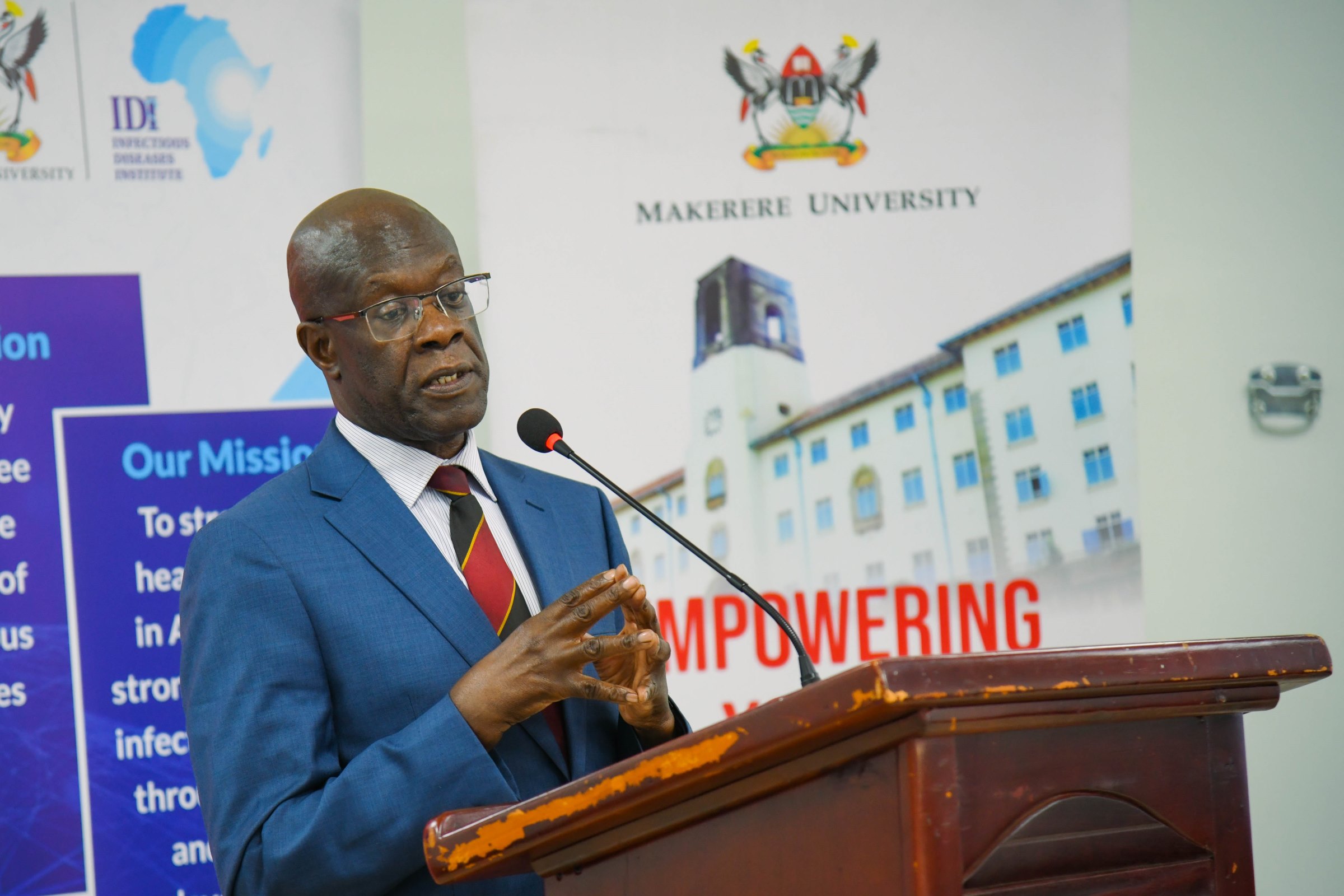
Prof. Sewankambo also addressed concerns about the future of clinical scholars at Makerere, arguing that rigid promotion policies risk driving away talented specialists who are vital to the university’s mission. Emphasizing that “it is wise people who change direction when it is necessary,” he urged university leadership to protect pathways that allow clinicians to grow, serve, and undertake PhDs without being pushed out of the system. His message underscored both the responsibility carried by the new fellows and the collective duty to safeguard the future of medical education and research.
Dr. Andrew Kambugu, Executive Director (ED) of IDI, warmly welcomed all guests and reflected on the Institute’s long-standing culture of adaptation and innovation in response to Africa’s evolving health challenges. He celebrated the presence of Prof. Nelson Sewankambo—honoring his legacy as a founder, mentor, and active research collaborator—and acknowledged the strength of Cohort One as a living example of what the program can produce.
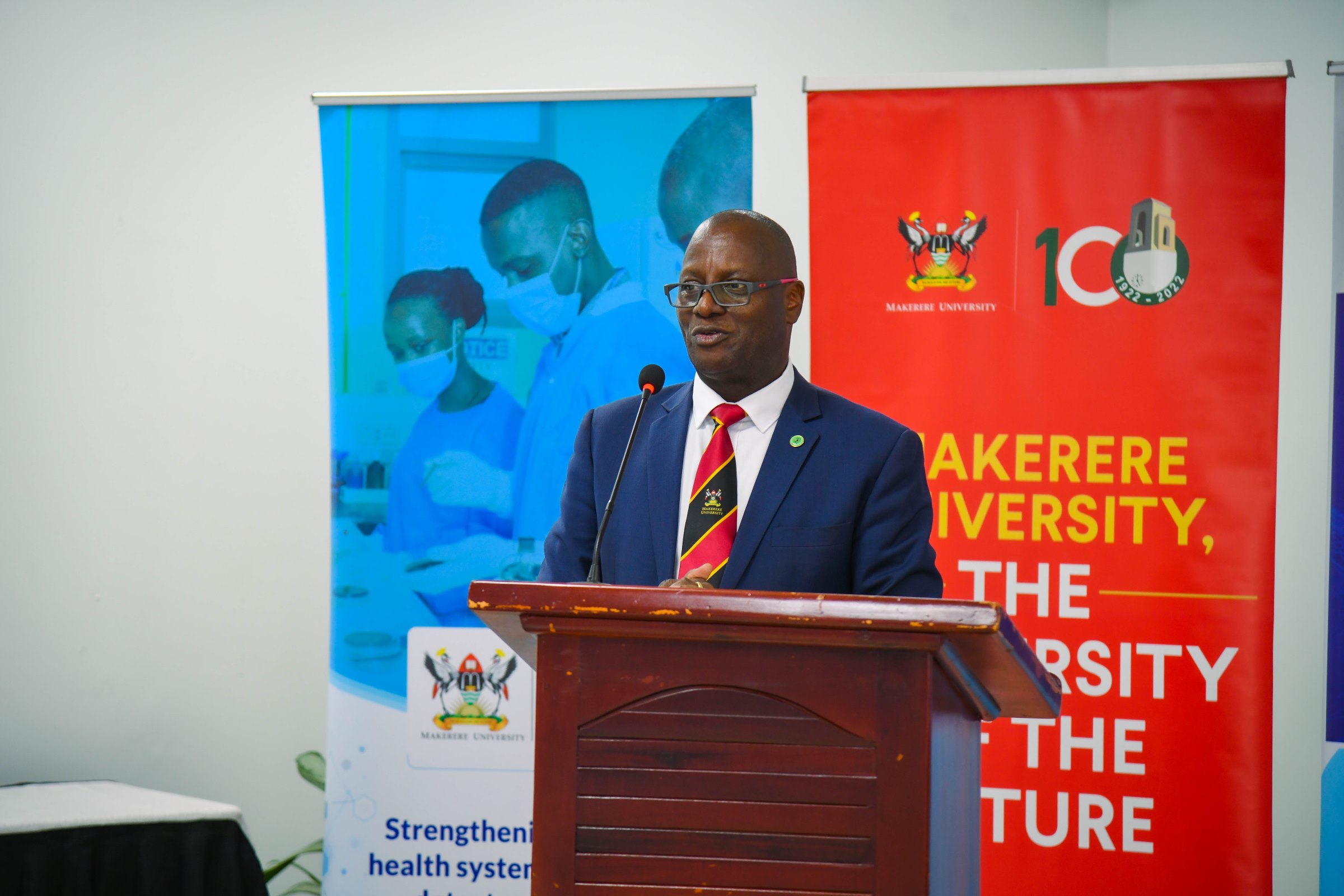
The ED emphasized that the Sewankambo Program stands on three pillars: rigorous selection, structured support with clear accountability, and strong alignment with national health priorities. He reminded the new fellows that IDI itself was born from the principle “adapt or perish,” and urged them to carry forward that spirit as they confront emerging threats like antimicrobial resistance and disease outbreaks across the continent. He also reflected on the power of mentorship, sharing personal experiences that illustrated how deeply mentorship can shape a scientific career. In closing, he expressed confidence that the five new fellows will honor the name they bear and continue building a legacy that inspires future generations.
Prof. Harriet Mayanja-Kizza reminded the newly selected fellows that while this achievement is significant, it marks only the beginning of a demanding but deeply meaningful journey. She expressed pride in the diversity of the cohort—drawn from ten African countries—and noted with delight that one of the brightest candidates emerged from the smallest country represented.
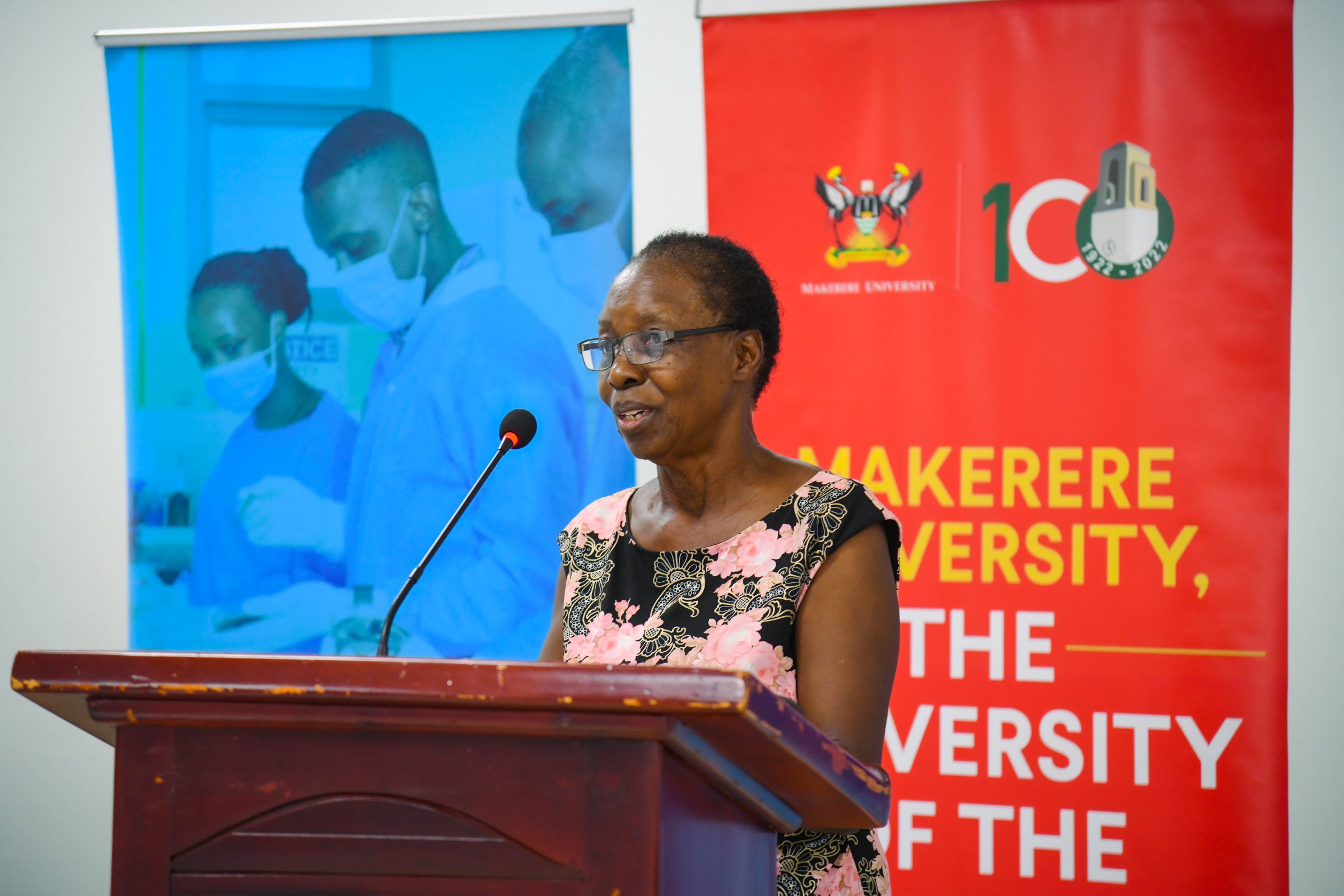
Reflecting on the evolution of impactful careers, she encouraged young people to embrace emerging fields such as bioinformatics, biotechnology, AI, molecular biology, and biostatistics, which she believes will define the future of science and global health. Prof. Mayanja spoke passionately about the diseases the fellows will tackle, highlighting the severe threat of antimicrobial resistance, the persistent burden of malaria, the dangers of resurfacing viral infections, and the transformative power of immunization. She urged the fellows to stay grounded, stay committed, and embrace the modern, data-driven tools now shaping global health research. In closing, she celebrated their potential to make a global impact and welcomed them formally into a field where their work will shape healthier futures for generations to come.
Prof. Ponsiano Ochama, one of the pioneers from the first cohort, reflected on the journey of the Sewankambo clinical scholarship from its early days in the “cookhouse” to the strong, structured program it has become. He recounted how the scholarship began as a mentorship-driven initiative aimed at nurturing future researchers and how sustained advocacy eventually removed barriers that once limited clinical scholars’ progression.
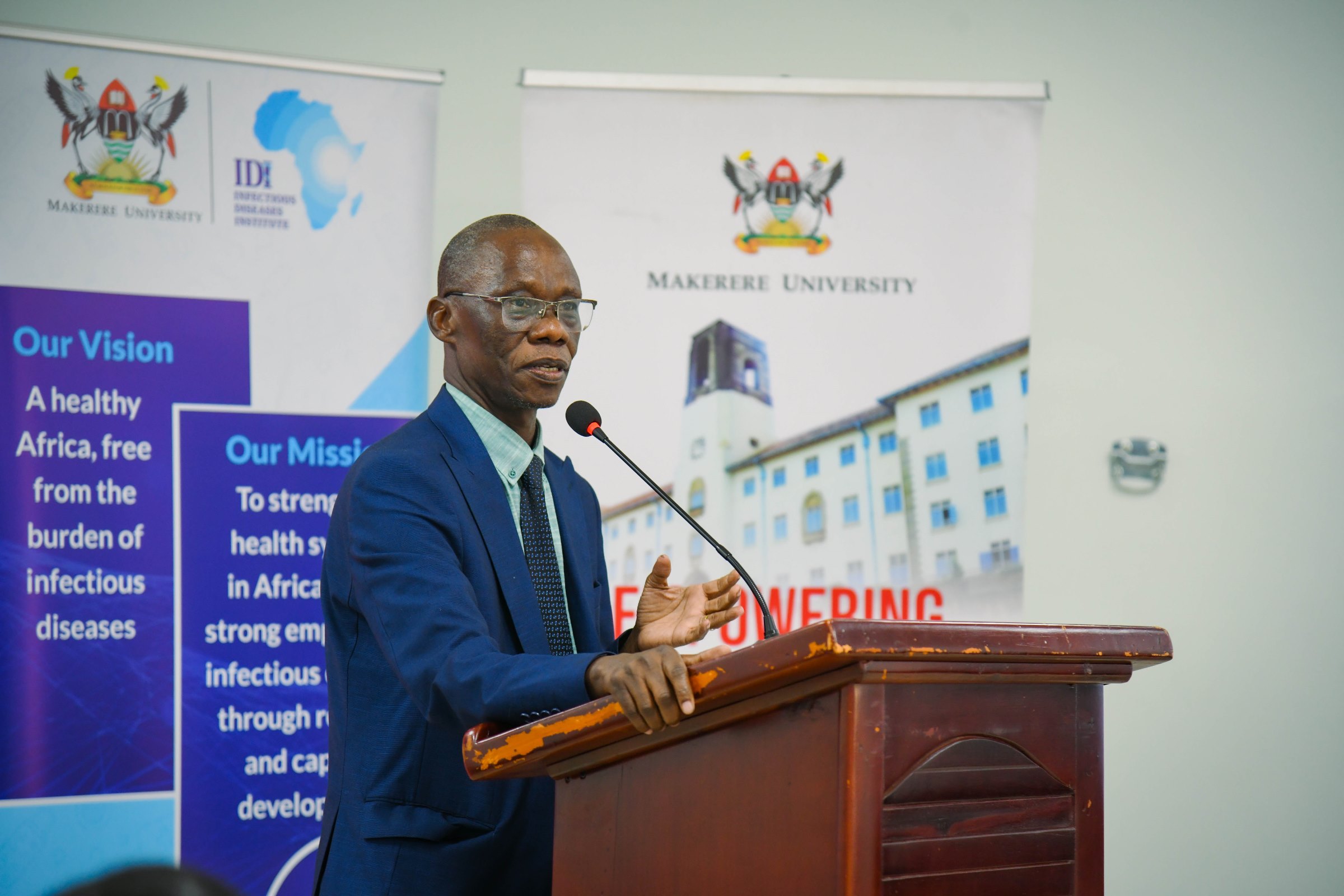
Prof. Ochama shared the impactful work he and his colleagues have since undertaken—highlighting, for example, a national study on hepatitis B mother-to-child transmission that shaped recent Ministry of Health policy. He encouraged the incoming cohort to embrace the program fully, assuring them that the “cookhouse” experience will transform them into strong, skilled scientists whose work will influence health policy and improve lives across the country.
Dr. Byonanebye Dathan, Deputy Head of the Global Health Security Department, outlined the strong rationale behind the Sewankambo Global Health Security Program, noting Africa’s rising burden of zoonotic and viral hemorrhagic fevers and the continent’s limited capacity for early detection and response. He emphasized that despite competing health priorities—HIV, TB, malaria, maternal health—there remain significant gaps in surveillance systems, workforce capacity, and research preparedness.
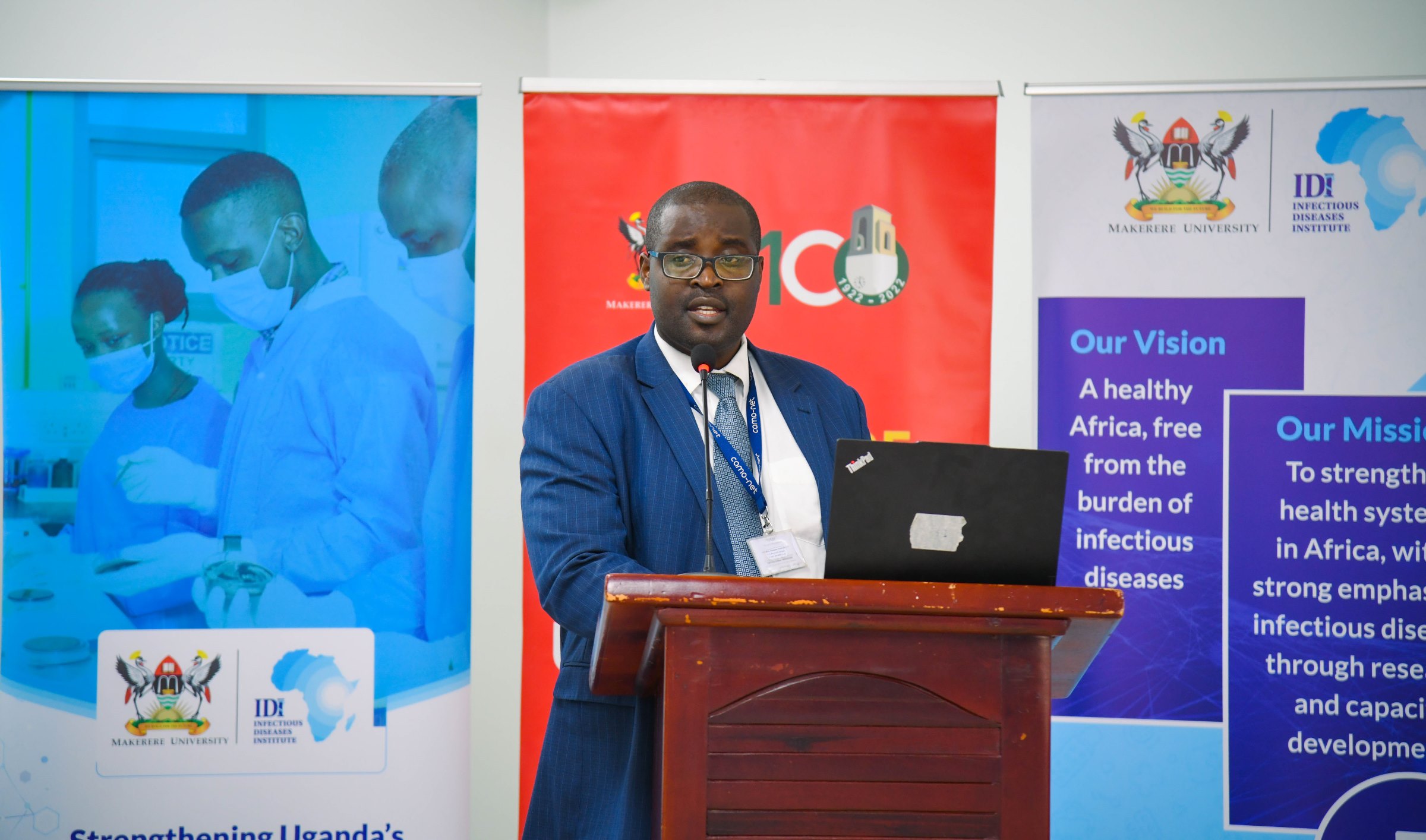
The program, he said, is designed to fill these gaps by strengthening research training, developing a skilled outbreak response workforce, and building a network of experts across Africa capable of generating evidence that directly informs policy and improves health systems. Dr. Dathan highlighted the rigorous selection process, the program’s alignment with WHO and national public health frameworks, and its integration of emerging technologies such as AI and machine learning. He affirmed that the fellows will receive structured mentorship, leadership development, and hands-on experience using existing data and real-world outbreak response systems—ensuring that their work leads not only to publications, but to meaningful impact across the continent.
Dr. Francis Kakooza, Acting Head of Global Health Security, traced the remarkable evolution of IDI’s Global Health Security work over the past decade, from its early CDC-funded surveillance efforts in 2015 to its expansion into biosecurity, AMR, epidemic research, policy development, and regional outbreak support. He highlighted IDI’s role in major national initiatives—including COVID-19 response, vaccination rollouts, risk management, lab accreditation, and the establishment of Regional Emergency Operations Centers—as well as its growing continental footprint through partnerships with Africa CDC, Mastercard Foundation, and Resolve to Save Lives.
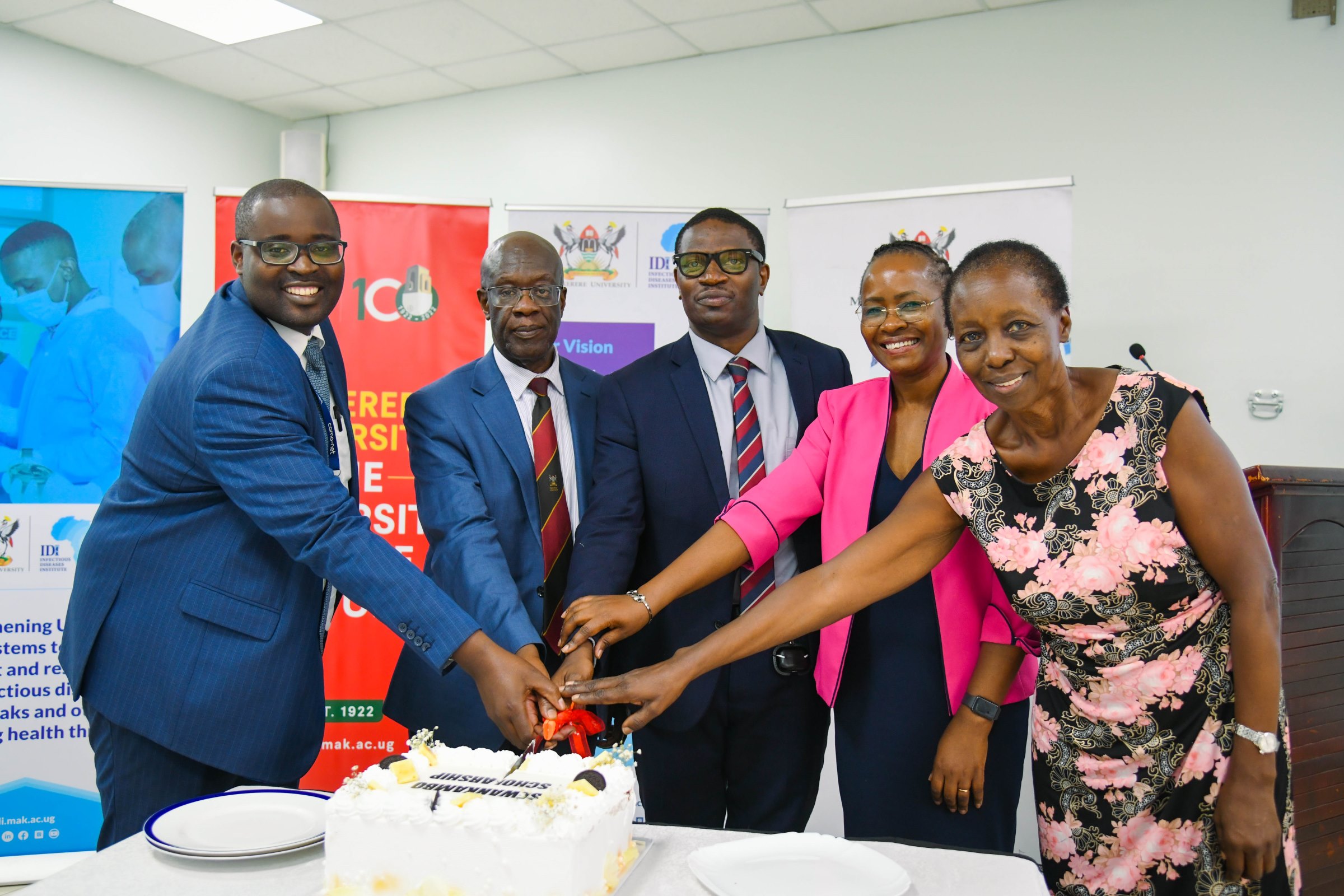
Dr. Kakooza emphasized that the launch of the Prof. Nelson Sewankambo Global Health Security PhD Program is the culmination of years of investment in strengthening African research capacity and supporting fellows whose work is already shaping policy. He expressed gratitude to all partners, mentors, and leaders who contributed to the program’s development, acknowledged the rigorous selection that yielded five fellows from ten countries, and reaffirmed IDI’s commitment to nurturing a new generation of scientists equipped to protect the continent from infectious disease threats.
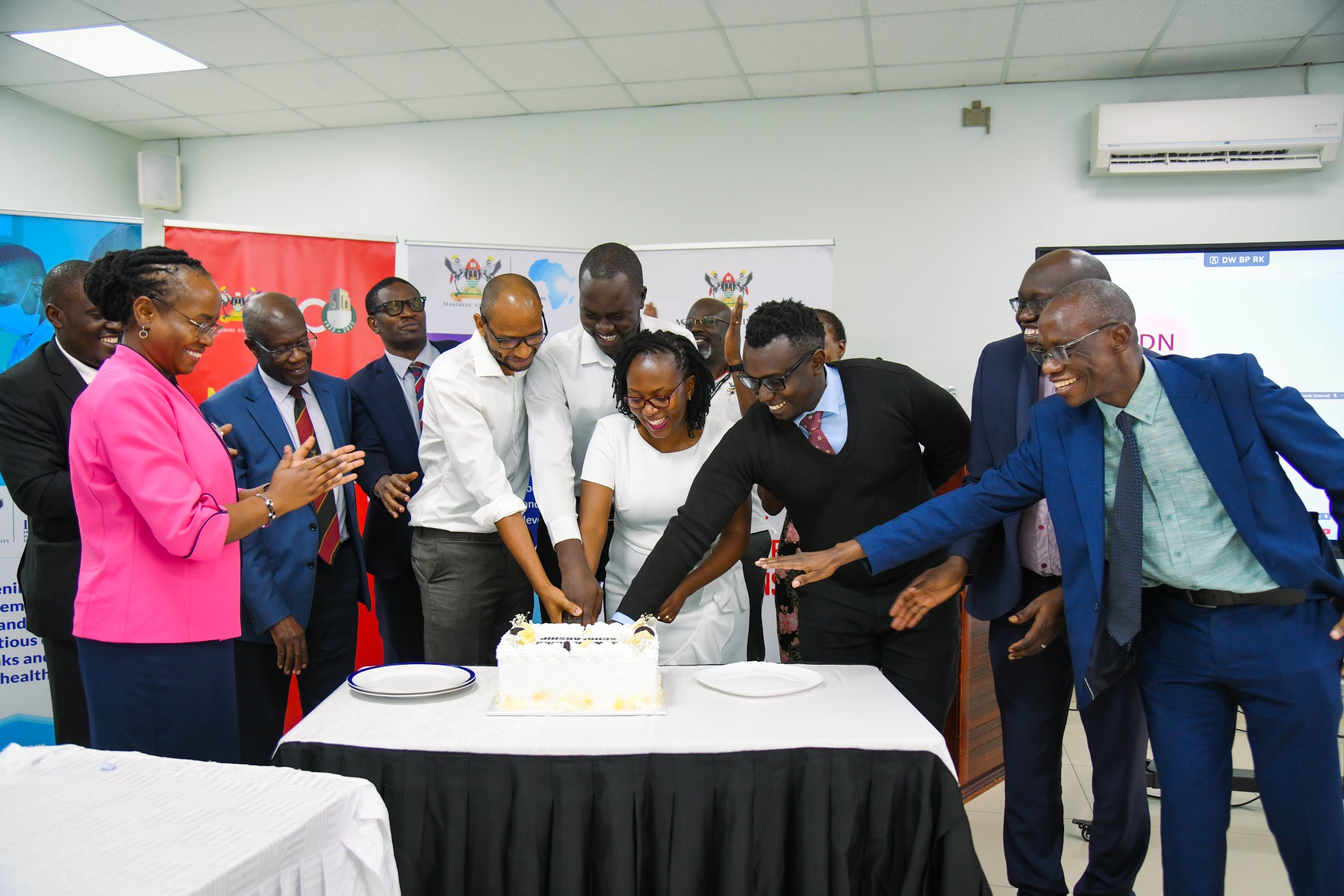
Trending
-

 General2 weeks ago
General2 weeks agoIn Honor of the Life and Legacy of Mr. Francis Seletze Ngabirano-A Steady Hand through the Storms
-

 Health1 week ago
Health1 week agoIDI launches the Sewankambo Training Program for Global Health Security in Africa
-
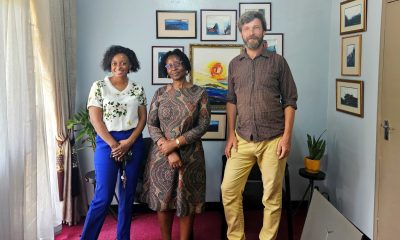
 Engineering, Art & Tech2 weeks ago
Engineering, Art & Tech2 weeks agoErasmus Exchange Prof.’s Mak Photo wins Poland National Prize
-
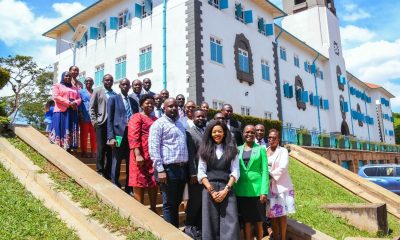
 General2 weeks ago
General2 weeks agoMakerere University Hosts Ambassador Judyth Nsababera for Strategic Dialogue Advancing Uganda–China Engagement
-

 General2 weeks ago
General2 weeks agoMakerere Students share experiences, connections and inspiration at inaugural For Youth, By Youth Conference in Turkey
